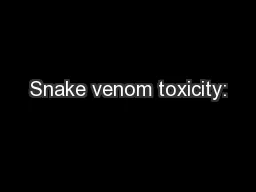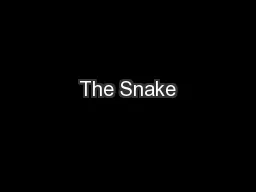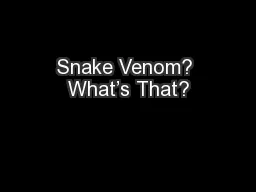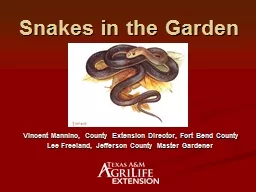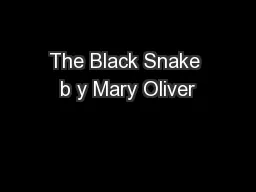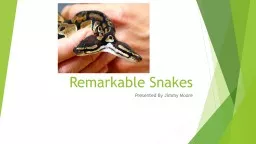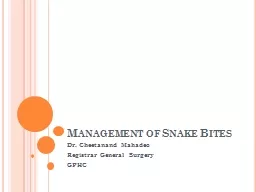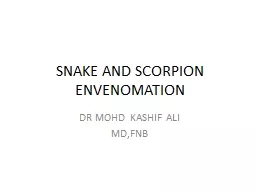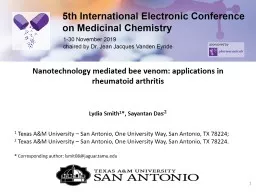PPT-Snake venom toxicity:
Author : conchita-marotz | Published Date : 2016-08-08
Usefulness and limitations of antivenom Dr Aniruddha Ghose Chittagong Medical College Overview Composition of snake venom Actions of components Phenotypic expressions
Presentation Embed Code
Download Presentation
Download Presentation The PPT/PDF document "Snake venom toxicity:" is the property of its rightful owner. Permission is granted to download and print the materials on this website for personal, non-commercial use only, and to display it on your personal computer provided you do not modify the materials and that you retain all copyright notices contained in the materials. By downloading content from our website, you accept the terms of this agreement.
Snake venom toxicity:: Transcript
Download Rules Of Document
"Snake venom toxicity:"The content belongs to its owner. You may download and print it for personal use, without modification, and keep all copyright notices. By downloading, you agree to these terms.
Related Documents

